Marcus Hayes: Scheduled losses, load management: Sixers must coddle Joel Embiid and Paul George to have a chance
Published in Basketball
PHILADELPHIA — First Joel Embiid, then Nick Nurse, signaled that Embiid won’t be ready for the start of the 76ers’ season after undergoing a delayed, unspecified, third surgery on the left knee that cost him most of last season.
“We don’t have a timeline,” Embiid told ESPN in a sympathy piece last month. “If I come back early enough and I’m still not myself, guess what? You’re not winning any games.”
“I’m not sure,” Nurse told a London reporter for the website talkSport on Wednesday. “Whether he’s ready for training camp or not, I think there’s maybe a lot more decisions than that to make before we get there.”
While the reason behind the weeks of delay of the procedure, and the precise nature of the operation, and the process (heh heh) of arriving at the latest diagnosis remain opaque, one thing is clear:
No matter what those answers really are, the Sixers’ aging, combative center and his sidekick, Paul George, an aged, confounding teammate, are not, and never again will be, able to play anything resembling a full, 82-game schedule.
Or even 70 games. Maybe 60. More likely, 50. Best case.
Complicating matters: George underwent arthroscopic surgery a month ago on his left knee, which he’d also injured last season. There’s no telling if he’ll be ready for the start of the season.
Let’s assume, for the sake of optimism and argument, that he is.
The only logical way for the Sixers to succeed is if they treat Embiid and George with kid gloves. Pack them in bubble wrap. Coddle them like they’ve never been coddled before, and, man, have they been coddled before.
This will mean a lot of load management. No back-to-backs for either guy. Road-trip vacations. Scheduled losses, just like Doc Rivers said.
That’s not exactly what the former Sixers coach said, so sorry, Doc, but folks took it that way, and it’s at least an approximation of what he meant: Games on the schedule you’re less likely to win because of the competition level, your players’ availability, and the timing of the game, such as a back-to-back on a long road trip.
Using my calculus regarding which games either, both, or neither should play, there would be 17 dates in which neither plays. I see five scheduled losses in my projection. That includes tough road games in Oklahoma City on Dec. 28 and in Dallas on Jan. 1. Embiid wouldn’t even be with the team, according to my plan, so why send George to the wolves in the middle of a nine-day, five-game, Christmas week road trip?
The pair would play together only 13 times before February, and nine of those games would be NBA Cup and/or nationally televised games. However, they would play together 21 games down the stretch. That’s plenty of time to create chemistry.
None of this is optimal, but then, neither are George or Embiid. It’s simply what the near future looks like for a team paying more than $100 million to the Lame and the Halt.
Embiid played in 19 games last season. George made it to 41, exactly half the slate. The Sixers last season unveiled a City Connect uniform, but, by far, the most commonly worn uniform for Embiid and George last season was street clothes.
There’s no compelling reason to not play each of them sparingly until around the trade deadline, which is Feb. 5. No back-to-backs; let them split those. There’s no real need to play them together early in the season. A team featuring Tyrese Maxey and second-year shooter Jared McCain with cameos from Embiid and George should be enough to manage mediocrity against a toothless Eastern Conference.
The deadline marks a runway to the postseason that several teams will be on, anyway, as contenders assimilate new players to their systems. The Sixers can join that group. That’s exactly what happened in 2019, when they added Tobias Harris at the deadline, which gave them their best roster and best chance to win a title; remember, they lost in seven games in the second round to the Raptors, the eventual champions.
This slow-play strategy is not a particularly good return on investment for the highest-paid players in franchise history, whose combined salaries this season are pushing $107 million, more than the rest of the team’s combined salaries.
With that much invested in two players, the release of the NBA schedule this week marks the start of long-term planning. The Sixers must first determine, even before camp begins, how much they can realistically expect from Embiid and George and the best use of their limited availabilities.
How often does each need to play to earn a playoff spot?
How can they best deliver Embiid and George to the playoffs in their best possible health so the team can win a series, or maybe even two?
Don’t laugh. The East is diminished and destabilized.
Bad luck, bad moves
Injuries felled stars Jayson Tatum of the Celtics, Tyrese Haliburton of the Pacers, and Damian Lillard of the Bucks, who then was traded to Portland. The Celtics also traded two-time champion and former Sixer Jrue Holiday.
Further, the Celtics just got sold to Bill Chisholm, a private equity mogul who has a degree from Wharton, just like Sixers owner Josh Harris. What could possibly go wrong? Finally, the Knicks fired Tom Thibodeau, the best coach they’ve had in decades, and hired Mike Brown, a coach who has one playoff series win in the last 12 years. Expect regression.
The pessimists (or, perhaps, the realists) among you might sneer at this optimism. You might contend that none of those concerns are relevant because neither Embiid nor George can be depended upon to consistently contribute during the regular season or the postseason.
To you, I say: Touché.
Nevertheless, the Sixers cannot subscribe to this sort of dismissiveness. Granted, it’s against all odds that the Decrepit Duo will be usable come April. The Sixers must devise a plan, then hope against hope. Going into this, they know there will be times when Embiid and/or George are unavailable.
As such, they need to be able to field a reasonably competitive team and be so in four different configurations:
Eyes on the prize
Again, the focus must be making the postseason. Once there, the future Hall of Famers must be capable of playing a playoff schedule — essentially, one game every two or three days or so for eight weeks.
OK, in the Sixers’ case, maybe four weeks. As opposed to last season, when they played zero weeks.
Already, the inability and unwillingness of the franchise over the past few years to deliver Embiid, in particular, to any given game clearly has soured the NBA on the Sixers. They will not play on marquee dates, like Christmas and Martin Luther King Jr. Day, and they have no nationally televised games during opening week.
Teams earn those opportunities. How can the Sixers regain relevance?
By winning. And how can they win? Judiciousness.
They need to put a hard cap on Embiid’s play. He should not be expected to suit up for more than 50 games. As a matter of fact, 40 would be even better. My projection for him, having studied the schedule: 42.
For George, who is 35, make it 60 games, max. Again, 50 would be better. My projection: 54.
The NBA, with its player participation policy, won’t like this. Too bad. Embiid’s injury history — both knees, his ankles, his feet, his back — serves as an indisputable foundation for unlimited, legitimate doctor’s notes. As long as the Sixers make him as available on the road as he is at home, and as available as possible for their diminished number of marquee games, the league should be reasonable and realistic. The NBA has plenty to gain if Embiid is healthy during the playoffs.
Herewith, some suggestions.
The Process (heh, heh)
— No. 1: For Embiid’s debut, the Sixers should target their first NBA Cup game, Oct. 31, at home against the Celtics, a rivalry game with plenty of built-in drama. It’s 10 days after the NBA season begins. It would be the first time fans would see Embiid, George and Maxey together — and, optimally, the last time they’d see them together for a while. Also, starting Embiid’s season on Halloween puts a whole new spin on “Trick or Treat.”
— No. 2: Play George in as many nationally televised road games as possible. That should lessen some of the controversy surrounding the Sixers’ load-management scheme. Generally, they should limit Embiid’s exposure to good teams on the road. Playing on the road means worse sleep and more stress. Beating good teams also requires more effort, more minutes. All of this equals a greater likelihood of reinjury or, worse, a new injury.
— No. 3: Don’t even bother bringing Embiid on the annual West Coast trip over the holidays. He’ll have played 11 games by then, and he’ll surely be worn out. He is, after all, 31 years old. There’s nothing like staying home for the holidays, wrapped in a shawl in front of a cozy fire, to refresh a player who has played 58 of his team’s last 164 regular-season games. George can make the that trip — he’s an LA native, and he loves it out there — but then, George played in a whopping 304 of his teams’ last 482 games. That’s more than 63%. I’ve got him at 54 games this season.
Iron. Man.
Cleveland clearly is the East’s best team. Orlando may continue to improve. The Celtics are the conference’s best organization. But if things fall right for the Sixers — and they certainly are due for things to fall right, for a change — they could earn a seed as high as No. 3. If George and Embiid stay healthy, they should at least expect a No. 5 seed, and a No. 4 seed, which would guarantee at least one series with home-court advantage, is entirely plausible.
That is, if the concept of Embiid and George staying healthy through April is plausible itself.
©2025 The Philadelphia Inquirer. Visit inquirer.com. Distributed by Tribune Content Agency, LLC.
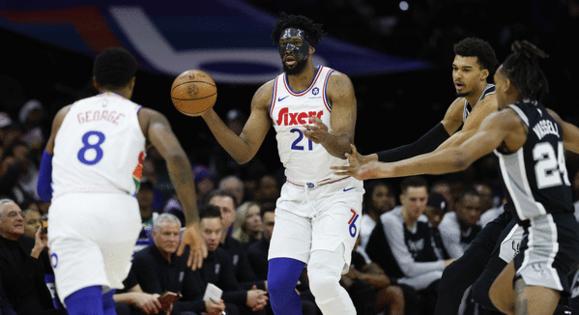
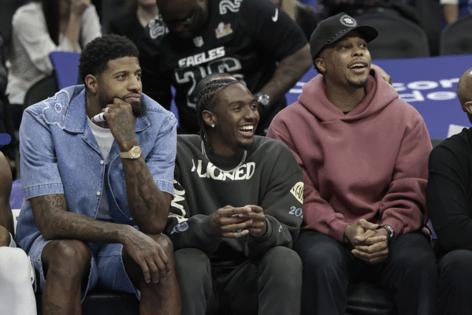
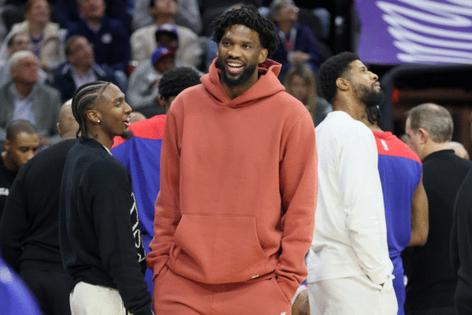



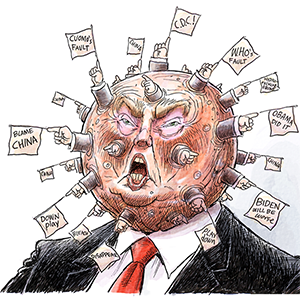

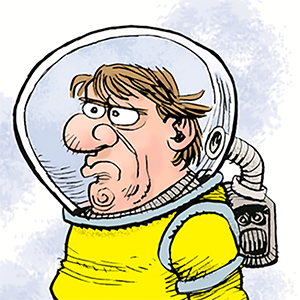

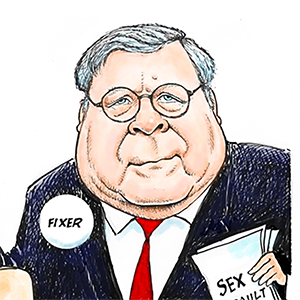
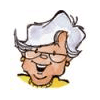
Comments